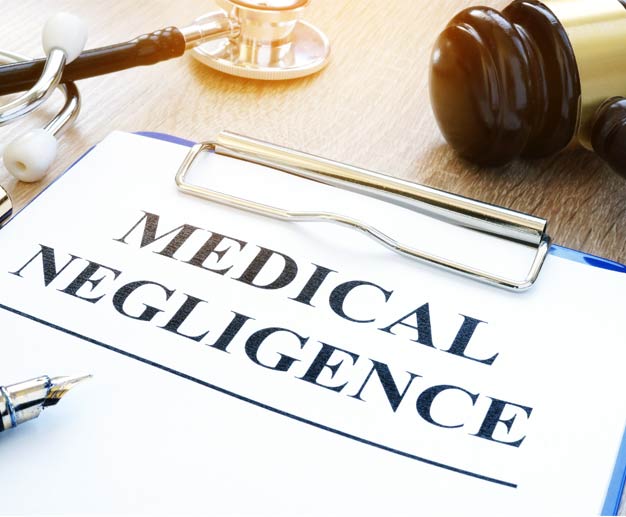
When we receive medical care, we place a lot of trust in doctors, nurses and other healthcare professionals to provide safe and competent care. Most of the time, that trust is well-placed, however sometimes things go wrong. This can be as a result of bad luck, a difficult diagnosis, or, sometimes, a medical mistake.
If a patient suffers avoidable harm or injury due to substandard care, they may have a claim for medical negligence. This applies regardless of whether the care was provided through the NHS or a private practice. A patient may want to bring a claim to seek an explanation, an apology, an assurance that the clinician or hospital trust has learned from the error, or even to seek compensation.
Is there a time limit to bring a claim?
Under s.11 of the Limitation Act 1980, a patient has three years from the date of injury or from the date they first realised they had been harmed by substandard treatment to bring a claim. Nevertheless, there are exceptions to this rule. For example, if the claim involves children, the limitation clock will not start to run until the child’s eighteenth birthday. For adults who lack mental capacity (as defined under the Mental Capacity Act 2005), the period doesn’t start until they regain capacity. In addition, under s.33 of the Limitation Act 1980, the court has a discretion to extend the any time limit in circumstances where it considers it just and equitable to do so.
How do you succeed in a medical negligence claim?
To succeed in a claim, you must prove four things:
- That the healthcare professional owed you a duty of care;
- That the duty was breached – meaning the care provided fell below an acceptable standard; and
- That you have suffered damage, your condition has been worsened or your recovery was delayed, and
- That this damage was caused by the breach.
What is meant by “Standard of Care”?
It is important to understand what is meant and expected by “standard of care”. The test for this is known as the “Bolam test” (from the case of Bolam v. Friern Management Committee [1957]) and states that a healthcare provider is not negligent if their actions would be supported by a responsible body of medical opinion, even if other professionals might have acted differently. Crucially, the harm must have been caused by the negligent care and not by the underlying illness.
Common defences to medical negligence claims
There are several defences which may be raised in response to a medical negligence claim, the most common of which are:
- No breach or causation: arguing that the treatment met accepted standards or that the harm would have occurred regardless of the healthcare professional’s actions.
- Contributory negligence: arguing that the patient’s own actions contributed to the harm. This if not a complete defence but may reduce any damages awarded to a successful claimant.
- Informed consent: arguing that the patient was properly informed and aware of both the treatment and the risks associated with it, as well as the availability of any reasonable alternative treatment.
Compensation and expert evidence
If your claim is successful, you may be awarded damages in the form of financial compensation for your losses and payment towards any future care. The purpose of damages is to put you in the position you would have been had the negligence not occurred. Damages are usually divided into two heads:
- General damages: which includes compensation for pain, suffering and loss of amenity (meaning a reduced enjoyment of life) and any future losses such as loss of earnings if the claimant is unable to return to work.
- Special damages: which cover any financial losses like medical expenses, travel expenses, past loss of earnings and care costs.
To support a claim, expert evidence is usually essential. This often involves three kinds of reports:
- A breach of duty report: to assess whether the defendant met the relevant standard of care.
- A causation report: whether the harm can be attributed to the mistakes i. there is a causal link between the negligence and loss.
- Condition and prognosis report: this looks at current impact, as well as the likely future effects of the injury, the prospects of recovery and what steps can be taken to improve the claimant’s condition and quality of life.
Funding a claim
Medical negligence claims can be expensive, but many are funded through a Conditional Fee Agreement (CFA), also known as a “no win no fee” agreement.
It is also possible to obtain After Event Insurance (ATE) which protects claimants against having to pay the defendant’s legal costs in the event of the claim being unsuccessful. Further, there is a costs mechanism known as Qualified One-Way Shifting, which limits a claimant’s liability to pay the defendant’s costs. However, this costs protection is not available in certain circumstances, for example where the claimant has been dishonest or the claim should never have been brought. In short, there are plenty of options for a claimant to seek justice without the burden of extensive legal fees.
How we can help
If you think you have suffered due to medical negligence, speaking to a solicitor can help you understand your options. At Taylor Hampton, we are here to guide you through the process with clear advice and dedicated support. We are also happy to take on suitable cases on a no win no fee basis, so you can seek justice without financial risk. For more information, please contact us here for a free consultation with our specialist medical negligence team.
For more information:
For more information on medical negligence claims or to learn more about our medical negligence practice click HERE or call +447967753372.
